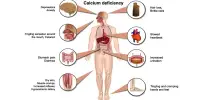Researchers claim that their two studies on air pollution and cognitive decline, one with humans and one with mice, show that cleaner air may reduce the risk of Alzheimer’s and other dementias. Two USC researchers who previously linked air pollution to an increased risk of Alzheimer’s disease and faster cognitive decline are now seeing evidence that cleaner air can improve brain health.
PM2.5, a fine particulate emitted by automobiles and factories, has been linked to memory loss and Alzheimer’s disease in studies led by USC. These tiny particles, which are smaller than the width of human hair, are a major source of concern. When inhaled, they travel directly from the nose to the brain, bypassing the blood-brain barrier, which normally protects the brain from dust and other invaders.
The USC researchers described how their labs independently reported indications of recent decreases in neurotoxicity (damage to the brain or nervous system caused by exposure to toxic substances) of PM2.5 air pollution in humans and mice in a research letter published in Alzheimer’s & Dementia: The Journal of the Alzheimer’s Association.
Studies on air pollution and cognitive decline, one involving humans and one with mice, provide evidence that cleaner air may reduce the risk for Alzheimer’s and other dementias.
Caleb Finch
Caleb Finch, University Professor, and Jennifer Ailshire, Associate Professor of Gerontology and Sociology at the USC Leonard Davis School of Gerontology, focused on PM2.5 pollution. Long-term PM2.5 exposure has been linked to premature death, especially in people with chronic heart or lung diseases.
Ailshire’s study, which was published earlier this year in the Journal of Alzheimer’s Disease, found a strong link between cognitive deficits and air pollution in people with lower levels of education in 2004. Her research, which was based on data from the nationwide Health and Retirement Study, found that when exposed to PM2.5, adults 65 and older with fewer than eight years of education were at a higher risk of cognitive impairment. However, Ailshire discovered no such link for study participants a decade later.
According to Ailshire, one likely factor was the decrease in PM2.5 over the previous decade. According to air quality data, average annual PM2.5 levels in the study participants’ neighborhoods were 25% lower than in 2004.

Notably, in 2014, only a small percentage of study participants lived in areas where annual average PM2.5 levels exceeded the US Environmental Protection Agency air quality standards. This suggested that improvements in cognitive decline were linked to a decrease in exposure to high pollution among older adults.
“Improving air quality across the country has been a huge success story in public health and environmental policy. However, there are signs of a shift in these trends “According to Ailshire. “Pollution levels are rising again, and there are more large fires, which cause significant air pollution in certain parts of the country. This makes me concerned about future trends in air quality improvement.”
Finch’s mouse study, published earlier this year in the Journal of Alzheimer’s Disease, also discovered evidence of decreased neurotoxicity of air pollution over time. Since 2009, Finch and his colleagues have been studying pollution levels at the same Los Angeles location and their impact on mouse brains. Mice exposed to a tiny, nanoscale version of PM2.5 appeared healthier after 2017. They demonstrated significant reductions in several neurotoxic factors, including oxidative damage to cells and tissues.
During the time that Finch and Ailshire were conducting their research, the composition of air pollution in the United States was changing. According to the EPA, PM2.5 levels in the United States fell by 41% between 2000 and 2020. In contrast, urban PM2.5 levels in Los Angeles fell only slightly between 2009 and 2019. While ozone levels nationwide decreased, ozone levels in Los Angeles County increased after 2015.
Finch and Ailshire emphasize that their findings do not allow them to assess the potential benefits of reduced air pollution on the risk of cognitive decline and dementia. Although PM2.5 levels in the United States decreased from 2009 to 2016, year-over-year increases since 2017 show that improvements in air quality can be reversed, as they were in Los Angeles.
“Our findings highlight the importance of ongoing efforts to improve air quality, as well as the continued importance of demographic and experimental evaluation of air pollution neurotoxicity,” Finch said.
Finch and Jiu-Chiuan “J.C.” Chen, an associate professor of preventive medicine at USC’s Keck School of Medicine, previously published a study that used both human and animal data to show that air pollution worsened brain aging processes, which may increase dementia risk. According to their findings, older women who lived in areas with high levels of PM2.5 experienced memory loss and Alzheimer’s-like brain shrinkage that was not observed in women who lived in areas with cleaner air.
















